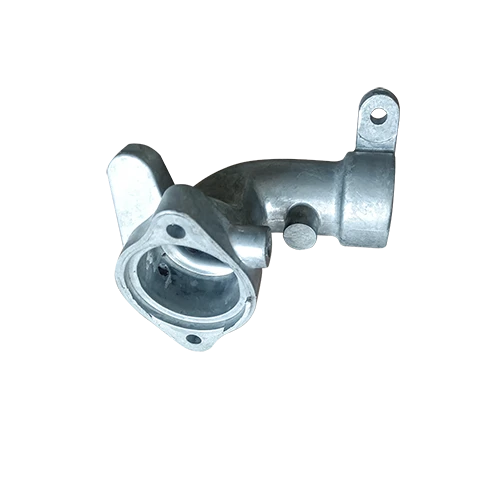Mobile:+86-311-808-126-83
Email:info@ydcastings.com
Understanding Green Sand Casting for Aluminum Production and Its Benefits in Foundry Practices
Aluminum Green Sand Casting A Comprehensive Overview
Aluminum green sand casting is a widely utilized manufacturing process that involves pouring molten aluminum into a mold made of compacted sand. This method is favored in various industries due to its cost-effectiveness, versatility, and ability to produce intricate designs with high precision. In this article, we will explore the principles of aluminum green sand casting, its advantages, applications, and the considerations necessary for successful execution.
The Basics of Aluminum Green Sand Casting
The process begins with preparing the green sand, a mixture of silica sand, clay, water, and additives. The term green refers to the moisture content in the sand rather than the color. The sand mixture is packed around a pattern that represents the final product, creating the mold cavity. Once the pattern is removed, the mold is ready for casting.
Molten aluminum, heated to a temperature typically between 660 °C to 700 °C (1220 °F to 1292 °F), is poured into the mold cavity. The aluminum cools and solidifies within the mold, taking on the shape of the pattern. After cooling, the mold is broken apart to retrieve the cast aluminum part.
Advantages of Aluminum Green Sand Casting
1. Cost-Effectiveness One of the most significant benefits of this casting method is its low cost. The materials used for green sand molds are inexpensive, and the process itself does not require elaborate equipment, making it an attractive option for small to medium production runs.
2. Versatility Aluminum green sand casting can produce a wide variety of shapes and sizes, from small intricate components to large structural parts. This versatility extends to the type of aluminum alloys that can be used, allowing manufacturers to choose materials that best fit their performance requirements.
3. High Turnaround Times The sand casting process allows for quick mold creation and casting, which is particularly useful in industries that require rapid prototyping or shorter production cycles.
4. Surface Finish and Detail Although sand casting might not yield the same surface finish as other methods like die casting, it can still produce parts with acceptable surface quality, especially when using modern techniques to refine the sand mixture and mold-making processes. This method also allows for considerable design freedom, accommodating complex geometries.
5. Recyclability The sand used in green sand casting can be reused multiple times, reducing waste and the overall environmental impact of the casting process.
Applications of Aluminum Green Sand Casting
aluminum green sand casting

Aluminum green sand casting is employed in various industries due to its adaptability. Common applications include
- Automotive Components Parts such as engine blocks, cylinder heads, and transmission cases can be efficiently produced using this casting method, which is crucial in the highly demanding automotive sector
.- Aerospace Lightweight aluminum components produced through sand casting are essential for aircraft structures, contributing to fuel efficiency and performance.
- Marine High-corrosion resistance aluminum castings are often used for marine applications, including components for boats and ships.
- Industrial Equipment Machinery parts, housing, and frames are frequently made using aluminum green sand casting due to the durability and strength of the final products.
Considerations for Successful Casting
While aluminum green sand casting offers numerous benefits, certain considerations must be taken into account to ensure successful outcomes
- Pattern Design The design of the pattern significantly impacts the quality of the casting. Proper attention must be paid to dimensional tolerances and draft angles to facilitate smooth removal from the mold.
- Sand Quality and Management The quality of the sand mixture directly affects the surface finish and dimensional accuracy of the cast part. Maintaining an optimal sand mix and regularly testing its properties can lead to improvements in production.
- Temperature Control Accurate control of the molten aluminum temperature is crucial for achieving the desired mechanical properties and preventing defects such as porosity and shrinkage.
Conclusion
Aluminum green sand casting remains a vital manufacturing process in today’s competitive landscape. Its cost-effectiveness, versatility, and ability to produce complex parts make it an ideal choice for various applications across multiple industries. By understanding the intricacies of this process and addressing critical factors for success, manufacturers can harness the full potential of aluminum green sand casting to deliver high-quality products that meet their customers' needs.
-
Why Should You Invest in Superior Pump Castings for Your Equipment?NewsJun.09,2025
-
Unlock Performance Potential with Stainless Impellers and Aluminum End CapsNewsJun.09,2025
-
Revolutionize Your Machinery with Superior Cast Iron and Aluminum ComponentsNewsJun.09,2025
-
Revolutionize Fluid Dynamics with Premium Pump ComponentsNewsJun.09,2025
-
Optimizing Industrial Systems with Essential Valve ComponentsNewsJun.09,2025
-
Elevate Grid Efficiency with High-Precision Power CastingsNewsJun.09,2025











